Published on 9 Oct 2024 | Last updated on 13 Oct 2024
Can You Guess Ethnicity from Facial Features? A Deep Dive into Human Diversity
- ByMedical Content Team
- Medically Reviewed byDr. Sabine Kulhanek
Fact checked
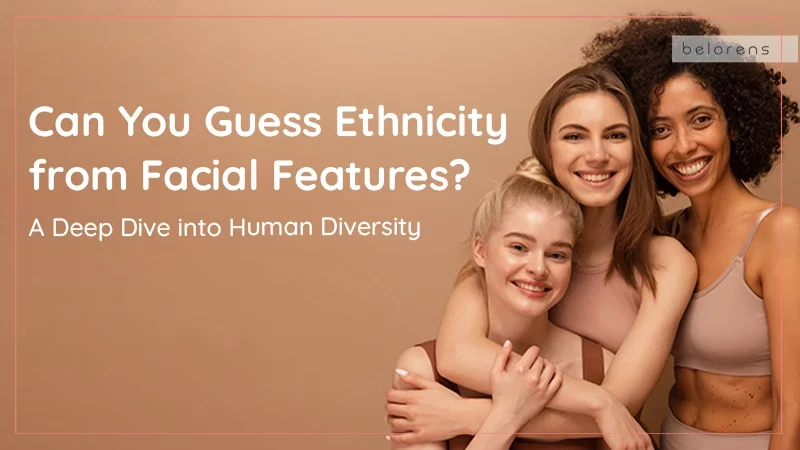
- The science of facial features and ethnicity
- Common facial features across ethnic groups
- Middle Eastern facial features
- Indigenous American facial features
- The role of mixed heritage and globalization
- The pitfalls of assumptions and stereotyping
- Expert opinions and studies
- Last answer: Can we guess someone’s ethnic background by looking at their face?
Have you ever found yourself trying to guess someone's ethnicity based solely on their facial features? It's a common curiosity, fueled by our natural inclination to categorize and make sense of the world around us. Faces tell stories, and the diversity of human appearances is a fascinating subject that bridges science, history, and culture. But how accurate can we really be in our assumptions? Can a broad nose, almond-shaped eyes, or high cheekbones truly reveal someone's ethnic background?
In this blog post, we'll discuss the complexity and beauty of facial diversity. We'll explore the genetic and environmental factors that shape our features, debunk common stereotypes, and examine the limitations of guessing ethnicity based on appearances alone. Prepare to challenge your perceptions and appreciate the rich tapestry of human faces that make each of us unique. Whether you're a curious reader, a student of anthropology, or someone who simply loves to learn about different cultures, this blog promises to be both enlightening and engaging.
The science of facial features and ethnicity
Understanding the diversity of human facial features requires a look into both genetics and environmental factors. Our faces are the product of millennia of evolution, shaped by natural selection, adaptation to different environments, and complex genetic combinations.
Genetic factors
Genetics plays a crucial role in determining our facial features. Genes dictate the structure of our bones, the texture of our skin, and the distribution of fat and muscle in our faces. Traits such as eye shape, nose width, and lip fullness are influenced by multiple genes. For instance, researchers have identified specific genetic markers associated with certain facial features common in different populations. These markers can provide clues about ancestry and ethnic background, but they are not definitive.
Environmental influences
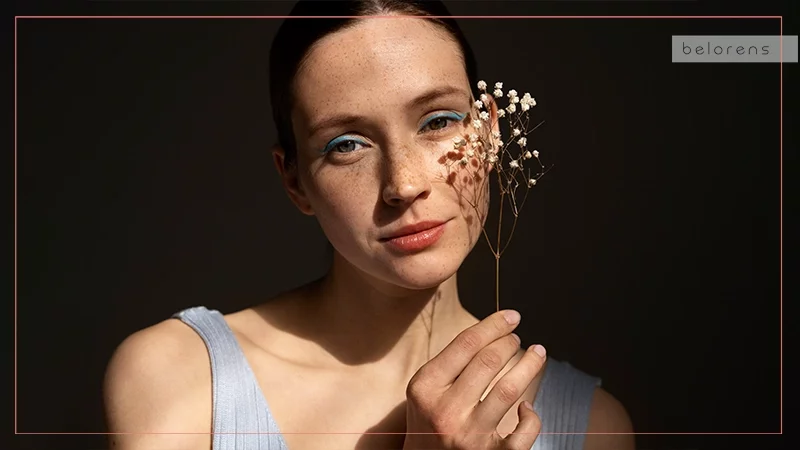
Environmental factors also contribute significantly to the development of facial features. For example, populations that have lived in extremely cold climates, such as the Inuit, have evolved shorter, broader noses to warm the air before it reaches the lungs. Conversely, populations from hotter, more arid regions often have narrower noses, which is an adaptation to efficiently cool the air. Additionally, a narrower nose might help to filter dust and particles more efficiently, which is useful in sandy or dusty conditions typical of deserts. For example, many Middle Eastern ethnic groups, such as Arabs and Persians, often have narrower noses.
Also Read: Celebrating Diversity: Exploring the Fascinating World of Nose Shapes Across Ethnicities
Evolution and adaptation
Over thousands of years, human populations have adapted to their environments, and these adaptations are reflected in their facial features. Natural selection has favored traits that enhance survival in specific climates. For instance, the epicanthic fold, common among East Asian populations, is thought to have evolved as a protection against cold and strong sunlight.
Genetic drift and migration
Genetic drift and human migration have further diversified facial features. As human groups migrated and settled in different parts of the world, they interbred with other groups, leading to a mixing of genetic traits. This interbreeding has created a vast array of facial features that often defy simple categorization.
Facial feature studies
Scientific studies on facial features have revealed that while certain features may be more prevalent in specific ethnic groups, there is a significant overlap among populations. These studies often use advanced imaging techniques and statistical models to analyze the relationships between facial features and genetic ancestry.
Overall, the science behind facial diversity is a blend of genetics, environment, evolution, and migration. While certain features can hint at an individual's ethnic background, they are not conclusive. The human face is a complex and beautiful mosaic that reflects our shared history and diverse heritage.
Common facial features across ethnic groups
Human facial diversity is vast, with distinct features often associated with different ethnic groups. While these features can provide clues about someone's ethnic background, it's essential to remember that significant variation exists within each group. Here's an overview of common facial features associated with major ethnic groups around the world.
African facial features
African facial features are diverse, reflecting the continent's vast genetic diversity and varied environments.
- Broad noses: Many African populations have broader noses with a wider nasal bridge, which may help to humidify and filter the air.
- Fuller lips: Fuller and more prominent lips are common among many African ethnic groups.
- Higher cheekbones: High, pronounced cheekbones are a frequently observed feature.
- Skin tones: Skin tones range from light brown to very dark, with higher melanin levels providing protection against intense sunlight.
- Facial shape: Individuals of African descent often have a wider and more rectangular facial shape. This can include a broader jawline and a more pronounced chin.
Asian facial features

Asian populations, encompassing East, South, and Southeast Asia, exhibit a range of facial features influenced by geography and genetics.
- Epicanthic folds: A prominent feature in East Asian populations, the epicanthic fold gives the eyes a distinctive almond shape.
- Flatter nose bridges: East Asian populations often have flatter nose bridges, while South and Southeast Asians may have more pronounced noses.
- Skin tones: Skin tones vary from very light in northern regions to darker shades in southern regions.
- Straight black hair: Straight, black hair is a common trait across Asian populations.
- Facial shape: East Asian individuals typically have a rounder facial shape, with wider cheekbones and a generally more compact facial structure.
European facial features
European populations are highly diverse, with facial features varying widely across the continent.
- Varied eye colors: Europeans exhibit a broad spectrum of eye colors, including blue, green, hazel, and brown.
- Narrower noses: Many European ethnic groups have narrower noses with higher bridges.
- Light skin tones: Skin tones range from very fair in northern regions to olive in southern regions.
- Hair color and texture: Hair color varies widely, from blonde and red to brown and black, with a range of textures from straight to curly.
- Facial shape: European populations exhibit a variety of facial shapes, but a common trait is the oval or oblong facial shape, characterized by a longer face with a narrower jawline and a higher forehead.
Middle Eastern facial features
Middle Eastern populations, residing in a region that serves as a historical crossroads of civilizations, show a mix of features.
- Prominent noses: Many Middle Eastern ethnic groups have prominent, well-defined noses.
- Deep-set eyes: Deep-set eyes with strong brow ridges are common.
- Olive to medium skin tones: Skin tones typically range from olive to medium brown.
- Dark hair: Dark hair, usually black or dark brown, is prevalent.
- Facial shape: Many individuals from the Middle East region exhibit high and well-defined cheekbones, contributing to a more sculpted facial appearance.
Indigenous American facial features
Indigenous peoples of the Americas, with their diverse backgrounds, exhibit unique facial features shaped by their environments and histories.
- High cheekbones: High, pronounced cheekbones are a common feature among many Indigenous American groups.
- Straight black hair: Hair is typically straight and black, with some variation in texture.
- Varied skin tones: Skin tones range from light brown to darker shades, depending on the region.
- Distinctive nose shapes: Nose shapes can vary widely, but many groups have moderately broad noses.
- Facial shape: Many Indigenous American individuals have broader facial shapes, characterized by wider cheekbones and a more expansive facial structure. A strong, square jawline is frequently noted, contributing to the overall robust facial appearance.
While these descriptions highlight common features within each ethnic group, it's important to recognize the diversity and overlap that exist. The human face is a complex tapestry influenced by genetics, environment, and cultural history. Understanding and appreciating this diversity enriches our view of humanity and underscores the limitations of making assumptions based on appearance alone.
The role of mixed heritage and globalization
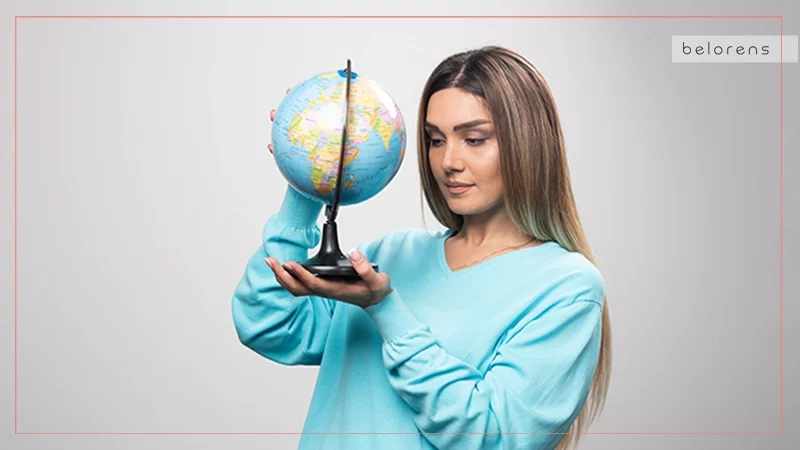
In today's interconnected world, mixed heritage and globalization play significant roles in shaping human facial features. As people from different ethnic backgrounds intermarry and migrate, the diversity of facial characteristics continues to expand, creating unique and blended features that defy traditional ethnic categorizations.
Mixed heritage
Mixed heritage, also known as multiracial or biracial ancestry, involves individuals whose parents or ancestors come from different ethnic backgrounds. This blending of genetic material results in a wide array of facial features that may combine traits from multiple ethnicities. Studies show that genetic mixing can lead to increased genetic variation, which is beneficial for the health and resilience of populations
Individuals of mixed heritage often have skin tones that are a blend of their parents' tones, resulting in a spectrum of hues that reflect their diverse ancestry. Features such as nose shape, eye color, and lip fullness can vary widely among people of mixed heritage, often combining elements from both parents' backgrounds. Hair can exhibit a range of textures and colors, from straight to curly and from light to dark, showcasing the genetic diversity.
Many celebrities, such as Dwayne "The Rock" Johnson (Samoan and African American) and Keanu Reeves (Hawaiian, Chinese, and English), exhibit mixed heritage features, showcasing the beauty and diversity of blended genetics.
Also Read: Celebrities with Almond Eyes: A Glimpse into Timeless Elegance
Globalization
Globalization has accelerated the mixing of populations, as people move across borders for work, education, and other opportunities. This increased mobility leads to greater genetic diversity and the blending of facial features.
Globalization also facilitates the exchange of beauty standards and practices, influencing how people perceive and enhance their facial features. This cultural exchange can lead to the adoption of new beauty trends and practices across different ethnic groups. In urban areas, where diverse populations are more likely to interact and intermarry, the blending of facial features is more pronounced, leading to unique combinations of traits.
To make a long story short, the roles of mixed heritage and globalization in shaping human facial features are profound. As the world becomes more interconnected, the blending of ethnic traits creates a rich tapestry of appearances that challenge traditional notions of ethnicity. Embracing this diversity allows us to appreciate the unique beauty of each individual and recognize the shared humanity that connects us all.
The pitfalls of assumptions and stereotyping
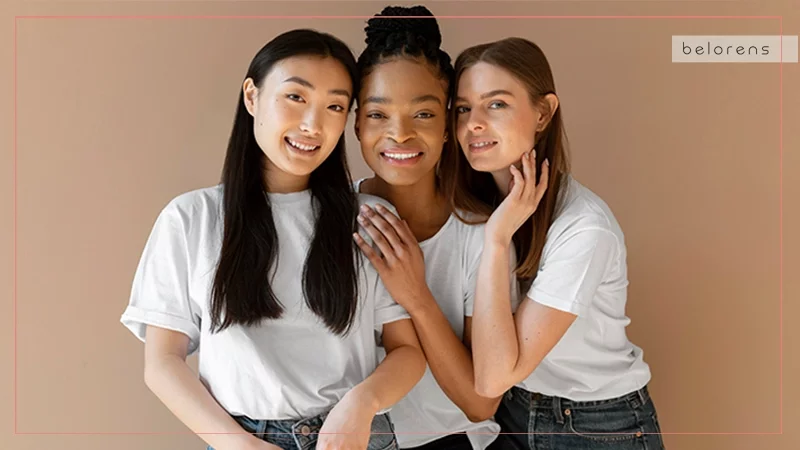
While it may be tempting to guess someone's ethnicity based on their facial features, doing so can lead to several pitfalls, including reinforcing stereotypes and fostering cultural insensitivity. Understanding the diversity and complexity of human appearances is crucial to avoid these issues.
Reinforcing stereotypes
One of the significant dangers of making assumptions based on facial features is reinforcing harmful stereotypes. Stereotypes are oversimplified and generalized beliefs about a particular group of people. When we assume someone's ethnicity based on their appearance, we risk perpetuating these generalized and often inaccurate ideas. This can lead to unfair treatment, discrimination, and social division.
For example, assuming that all individuals with certain features belong to a specific ethnic group can ignore the vast diversity within that group. It also overlooks the fact that many people have mixed heritage and do not fit neatly into any single category. By reinforcing stereotypes, we contribute to a culture that values appearances over individual identities and experiences.
Cultural insensitivity
Assumptions based on facial features can also result in cultural insensitivity. When we judge people by their looks, we fail to recognize and respect their unique cultural backgrounds and personal identities. This can lead to misunderstandings, alienation, and a lack of appreciation for cultural diversity.
For instance, asking someone "What are you?" based on their appearance can be intrusive and offensive. It reduces their identity to a set of physical traits and ignores the rich tapestry of their cultural heritage, experiences, and personal stories. Respecting individuals means acknowledging that their appearance does not define their identity or cultural background.
The complexity of human appearance
Human appearance is shaped by a multitude of factors, including genetics, environment, and individual experiences. It is impossible to accurately determine someone's ethnicity based on facial features alone. People within the same ethnic group can exhibit a wide range of features, and those from different groups can share similar traits due to historical migrations and intermarriage.
Understanding this complexity helps us appreciate the richness of human diversity. It encourages us to look beyond superficial traits and engage with people on a deeper, more meaningful level. By doing so, we foster a more inclusive and respectful society.
Also Read: Ways To Tell If Someone Has Had A Nose Job
Expert opinions and studies
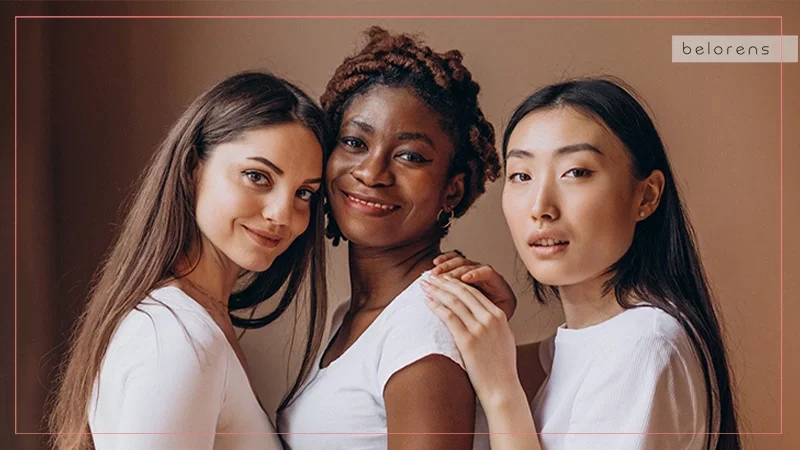
To understand the limitations and complexities of determining ethnicity based on facial features, we can turn to insights from anthropologists, geneticists, and sociologists. Their research and expertise highlight the nuanced relationship between physical appearance and ethnic background, emphasizing the need for caution when making assumptions.
Anthropologists study human societies, cultures, and their development. They emphasize that facial features alone are insufficient to accurately determine ethnicity due to the vast diversity within and across populations. According to anthropologist Nina Jablonski, the variation in human facial features is a result of a combination of genetic factors and environmental influences over thousands of years. This means that similar features can appear in unrelated populations, and diverse features can exist within the same ethnic group.
Geneticists focus on the hereditary aspects of human features, exploring how genes influence traits such as facial structure. Studies by geneticists like Dr. Arslan Zaidi have shown that while certain genetic markers are associated with specific facial features, these markers are not exclusive to any single ethnic group. Genetic research reveals that the mixing of populations over centuries has resulted in shared traits across different groups. This genetic intermingling makes it challenging to link facial features directly to ethnicity with high accuracy.
Sociologists examine the social aspects of human behavior, including how perceptions of race and ethnicity impact society. Sociologist Dr. Ann Morning points out that race and ethnicity are social constructs with no clear biological basis. People's perceptions of ethnicity based on appearance are influenced by societal norms and cultural contexts rather than scientific facts. This understanding underscores the importance of not relying on facial features to determine someone's ethnic identity, as such perceptions are shaped more by social constructs than by biological reality.
Several key studies provide valuable insights into the complexity of facial features and ethnicity. A study conducted by researchers at Stanford University used machine learning to analyze facial features and found that while algorithms could identify certain ethnic traits, their accuracy was limited and often flawed. Another study published in the journal "Nature" explored the genetic basis of facial morphology and concluded that facial features are influenced by multiple genes, many of which are shared across different populations.
In conclusion, expert opinions and studies from fields such as anthropology, genetics, and sociology highlight the limitations of determining ethnicity based solely on facial features. The diversity and complexity of human appearances result from a combination of genetic, environmental, and social factors. Understanding these perspectives encourages a more nuanced and respectful approach to discussing ethnicity and reinforces the importance of looking beyond superficial traits to appreciate the rich diversity of human identity.
Last answer: Can we guess someone’s ethnic background by looking at their face?
To sum up what we have said so far, while certain facial features and shapes may be more common within specific ethnic groups, the complexity and diversity of human genetics make it nearly impossible to accurately determine someone's ethnic background based solely on their face. The interplay of genetic inheritance, environmental adaptations, and cultural influences results in a vast array of facial features that often defy simple categorization. Mixed heritage and the effects of globalization further blur these distinctions, showcasing the beautiful mosaic of human diversity.
Assumptions based on facial features can lead to stereotypes and cultural insensitivity, overlooking the individuality and unique experiences of each person. Therefore, while facial characteristics can offer some hints about ethnic background, they are not definitive. The rich tapestry of human appearances reminds us to appreciate and celebrate the diversity that makes each of us unique. Ultimately, understanding and respecting this complexity enriches our interactions and fosters a more inclusive and empathetic society.




